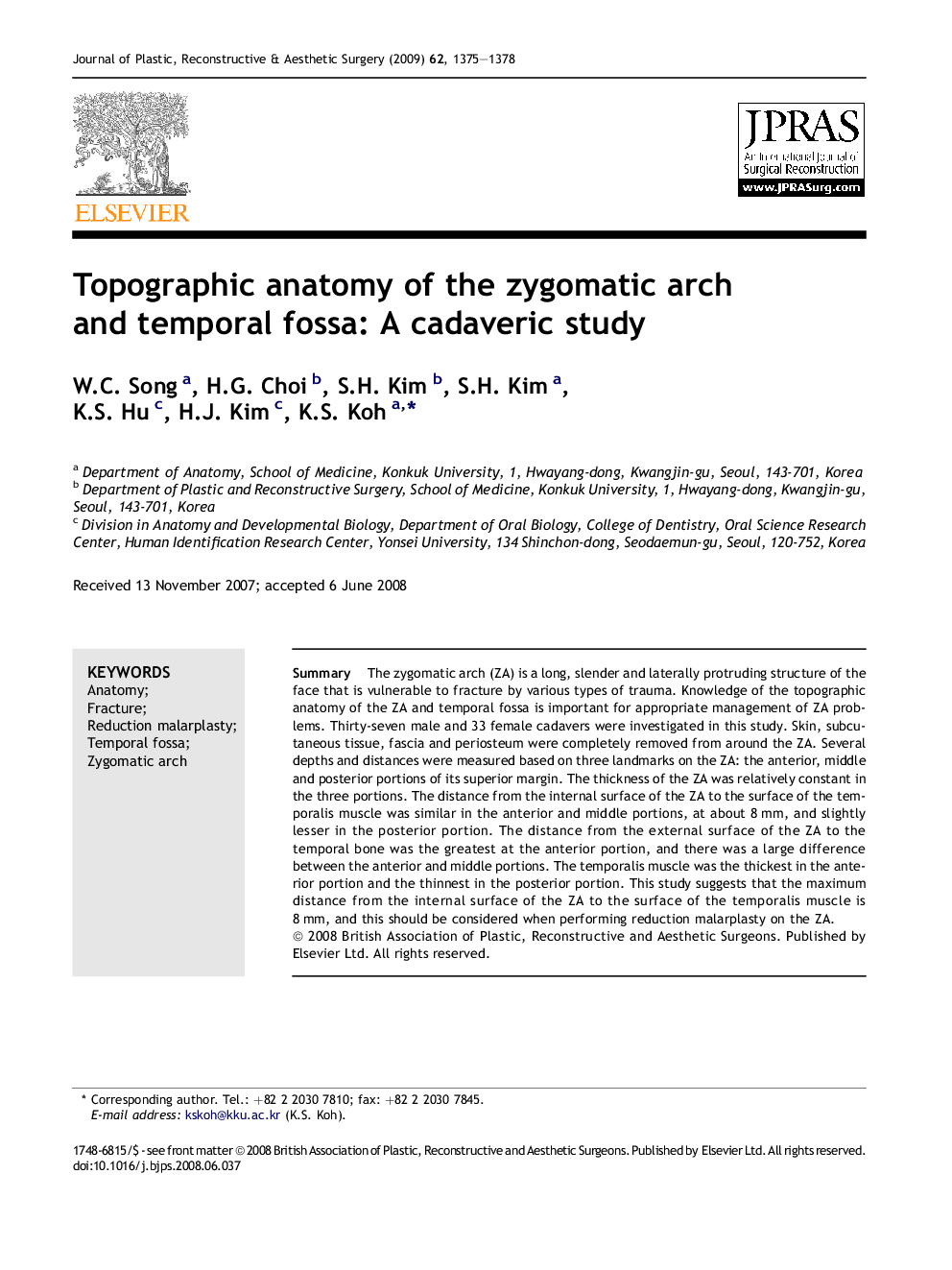| Article ID | Journal | Published Year | Pages | File Type |
|---|---|---|---|---|
| 4120336 | Journal of Plastic, Reconstructive & Aesthetic Surgery | 2009 | 4 Pages |
SummaryThe zygomatic arch (ZA) is a long, slender and laterally protruding structure of the face that is vulnerable to fracture by various types of trauma. Knowledge of the topographic anatomy of the ZA and temporal fossa is important for appropriate management of ZA problems. Thirty-seven male and 33 female cadavers were investigated in this study. Skin, subcutaneous tissue, fascia and periosteum were completely removed from around the ZA. Several depths and distances were measured based on three landmarks on the ZA: the anterior, middle and posterior portions of its superior margin. The thickness of the ZA was relatively constant in the three portions. The distance from the internal surface of the ZA to the surface of the temporalis muscle was similar in the anterior and middle portions, at about 8 mm, and slightly lesser in the posterior portion. The distance from the external surface of the ZA to the temporal bone was the greatest at the anterior portion, and there was a large difference between the anterior and middle portions. The temporalis muscle was the thickest in the anterior portion and the thinnest in the posterior portion. This study suggests that the maximum distance from the internal surface of the ZA to the surface of the temporalis muscle is 8 mm, and this should be considered when performing reduction malarplasty on the ZA.
